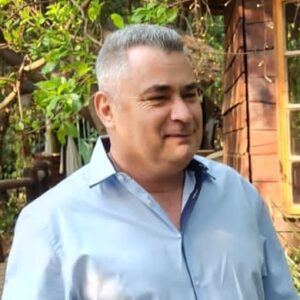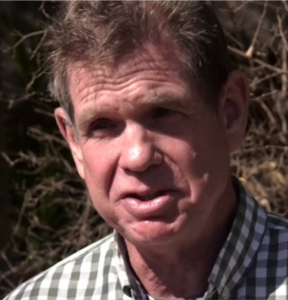Magaliesburg – A Brief History
There is so much that is special about the town of Magaliesburg and the mountain range Magaliesberg of a similar name. So much history has swept through this area, from the beginning of humankind to the modern age.
Just as Vincent Carruthers has written in his book the “Cradle of Life” this area is indeed the origins of life from the beginning to where we find ourselves today.
Some of the notable highlights of Magaliesburg history are:
- The Magaliesberg mountain range is one of the top 4 oldest mountain ranges in the world, much older than the Himalayas which are infant by comparison.
- The Cradle of Humankind and Maropeng is just over 15km away from Magaliesburg village. The Sterkfontein caves are just a little bit further on.
- The first real inhabitants of this area were the San/Bushmen and there are many traces of them being here. One can go on a tour of their hieroglyphs at the Askari Game Reserve. They lived by being hunter-gatherers, just like Mrs Ples and her fellow travellers. These were stone-age people.
- Then came the iron-age people who were known collectively as the Tswana. These were pastoralists and agrarian, with large herds of cattle and planted crops. They lived in comparative harmony with the Bushmen with some friction now again, but nothing to write home about. The Tswana were well known for the large well-ordered towns, highly developed societies and orderliness. Their big downfall was that they were not war-like.
- The area was a paradise enjoyed by many animals. The Tswana of the area at the turn of the 18th century into the 19th century stated that there were herds of over 300 elephants in the area known as Hekpoort Pass and Seekooiehoek. These were all shot out by the late 19thcentury, but efforts of game farms such as Askari have introduced them to the area. The area was a virtual Noah’s Ark of animals.
- The harmony of the area was soon shattered with the arrival of Mzilikazi and his Matabele/Ndebele in the second decade of the 19thcentury. All hell broke out with huge destruction of a civilised order amongst the Tswana, who were either wiped out, turned into virtual slaves or press-ganged into Mzilikazi’s armies.
- Mzilikazi’s tyranny ranged from south of the Vaal River and into the Free State down to the Orange River bordering onto the Cape Colony in the south, west into the borders of the Kalahari desert in what is now Botswana, east to the edge of the lowveld to the Soutpansberg and to the Mozambique border, and up to the north to just across the Limpopo River to raid the Mashona. He was an absolute despot.
- In the early days the area was visited by several missionaries such as John Campbell, Reverend Broadbent, Reverend Archbell, Revered Andrew Murray, Daniel Lindley. There were even three French missionaries from the Paris Missionary Society.
- Mzilikazi (then a general in Chaka’s army) and the origins of his tribe were a breakaway from the Zulus during the reign of King Chaka. On three occasions the Zulu’s conducted punitive raids against Mzilikazi. On one occasion the Zulu’s camped out on the east bank of the Magaliesburg river in the Maloney’s eye area and this specific area was considered sacred by them.
- Maloney’s Eye is the source of the Magaliesburg river and supplies abundant water to the whole region, and this contributed to the fertility of the area and the attraction for large quantities of a wide variety of game.
- But Mzilikazi had made too many enemies during his rise to power. He went a step too far when his impis attacked a number of Voortrekker parties at the Vaal River in what became known as the Battles of The Vaal when the Liebenberg Party and the Erasmus Party was wiped out (1836). The Matabele then attacked a main party of Voortrekkers in what became known as the Battle of Vegkop. This was a critical point because if the Matabele had won, then it is highly unlikely that the Boers would have settled in what became the Transvaal. The Battle of Vegkop is probably an even more significant battle than the Battle of Blood River.
- The Boers regrouped after the Battle of Vegkop and then were determined to drive the Matabele out to the north of the Limpopo in 1837. This they did in a series of battles known as the Battle of Mosega and then the Nine Days Battle at eGabeni. The Boers under Andries Hendrik Potgieter, Gert Maritz and Pieter Uys led the Boer forces to victory. This opened up the Transvaal to settlement by the Boers.
- Before Mzilikazi was driven out of the area, he was visited by a number of white travellers, hunters and missionaries who came up from the Cape, such as Robert Schoon, William McCluckie, David Hume, Dr Andrew Smith (and his expedition artist Charles Bell – photography had not been invented yet, so artists were used), William Burchell and William Cornwallis-Harris amongst them. The lure of ivory and adventure attracted many of them.
 |
 |
 |
 |
| Robert Moffat Had a special relationship with Mzilikazi |
William Burchell | Dr Andrew Smith | William Cornwallis Harris |

A Matabele kraal, usually attributed to William Cornwallis Harris, 1836, but the artist is uncertain.
Amongst the early settlers in the Magaliesberg area was the Kruger family. The most notable was Paul Kruger who went on to become president of the Transvaal. Paul Kruger had friends in Magaliesburg, and often stopped over at Kruitfontein to drink of the sulphur waters to relieve his arthritis. The Boers shaped history of this region and eventually the whole of South Africa due to the 1st and 2nd Boer Wars.
| Stephanus Johannes Paulus “Paul” Kruger
Fought at Vegkop, Mosega and eGabeni in 1836 and 1837, and then went on to become President of the Zuid Afrikaanse Republiek (“ZAR”) He made his family home outside Rustenburg first on the farm Waterval and later Boekenhoutfontein. The latter is now a museum and is part of Kedar Lodge, South Africa’s largest Boer War Museum, a worthwhile place to visit. |
 |
The area attracted a number of English settler families from the Cape such as the Hartley, Jennings and Robinson families, and they became firm friends of Paul Kruger. They were attracted t the area by the economic prospects of the area.
 |
 |
 |
 |
| Henry Hartley of Vaalbankand Thorndale, Magaliesburg | Thomas William Maloney, stepson of Henry Hartley | James Jennings of Blaauwbank, Magaliesburg | William Jennings of Nooitgedacht, Magaliesberg |
Henry Hartley travelled up north of the Limpopo to visit Mzilikazi and get permission to hunt elephant in the region. He became a firm friend of Mzilikazi as was known as “The Keeper of King’s Elephants”. Some of the children of the Hartley and Jennings families married. Henry later took the men folk of the extended family hunting in Matabeleland, along with his stepson William Maloney. William Jennings, a son of James Jennings earned the money to pay for the famous farm Nooitgedacht from the proceeds of the ivory trade. Mzilikazi wanted Thomas Maloney to settle in Matabeleland.
Gold was discovered on James Jennings’s farm Blaaubank by the Australian prospector Henry Lewis who found quartzite gold in the area. The first mining concern in Gauteng, the Nil Desperandum Co-operative Gold Company was formed at Blaauwbank in 1874. Although the Blaauwbank Mine was pegged in 1874, it wasn’t until 1913 that its first recorded output was declared: 7 200 pounds of gold were produced from 10 012 tons of ore.
 |
 |
| South African gold miners | The Jameson Raid |
The finding of gold transformed the Magaliesburg area by attracting miners and others to the area. Even Cornish miners, who were suffering an economic depression in Britain, came to the area. Part of their legacy is the building on the Jenning’s Junction Tea Housewhich today is the school hall at Happy Acres. Another landmark and legacy of the Cornish miners is the old water mill of the Orient Magaliesburg Tobacco Company, also on the school grounds.

Historic photographs of buildings associated with The Orient Magaliesberg Tobacco Company.
The top left and central photographs are of the mill, while the remainder are described as the “Tobacco Store Room”, “Packing Room” and “Cutting Room”.
What the Boers feared came to pass: The discovery of gold would bring the focus of empires upon their little republic. In 1877 Britain formally annexed the Transvaal. This would raise the tensions in the community of Magaliesberg and would divide the community between pro-Republican and pro-British. Families split down the middle over this. There were many families of British descent who sided with the Boers.
But the war drums were beating again when the ZAR declared independence from the British which led to the 1st Boer War (1880 – 1881) and the ZAR gaining their freedom from Britain. Many of the men folk in the Magaliesberg district went to fight in the neighbouring towns of Potchefstroom, Pretoria and Rustenburg.
In 1886 gold was discovered on the farm Langlaagte. This was to lead to the founding of Johannesburg, and the development of the Witwatersrand Goldfields which became the richest and largest goldfield in the world. This was to impact Magaliesburg with the demand for labour and food produce. Thomas Maloney proposed selling water from Maloney’s Eye to Johannesburg, but this was vetoed by the farmers in the areas as this would deprive them of vital water for farming.
The Magaliesberg area became a vital agriculture centre, providing food for Pretoria and Johannesburg. It also became a centre for tobacco growing in South Africa. Many of the old tobacco drying sheds can still be seen in Magaliesburg today. The Hartley and Jennings families played a significant role in this. The Hartley family also established a water mill in the town of Magaliesburg and this was known as the Magaliesburg Tobacco Company Mill. At this mill was the first electricity generator in Magaliesburg which was driven by a water turbine. This mill was established where the restaurant of Vintage Amber is located today. When the market for tobacco declined, the mill was used to mill flour and was later bought out by Premier Milling and later closed down.
Because of the wealth of the Witwatersrand, imperialists led by Cecil John Rhodes started agitating for the downfall of the ZAR government and the takeover of the ZAR by Britain. This led to the Jameson Raid, led by Dr Leader Star Jameson, a close friend of Rhodes, which passed through the town of Magaliesburg on the night of 31st December 1895 – 1st January 1896. The Raid had stopped at the stores of Mrs Boons Store (in the town of Boons) and Hinds’ Store in Magaliesburg for refreshments. The firing of cannons as Krugersdorp could be heard by the townsfolk of Magaliesburg. Although the raid was a complete fiasco, it gave Rhodes much satisfaction as the scene was now set for Britain to have a collision course with the ZAR Republic, leading to the catastrophic Second Boer War. A dirt road in the area of Koesterfontein-Syferbuilt is still known today as the “Jameson Road”.
In late August-September of 1899 the district of Magaliesburg was gripped by war fever and the ZAR started calling up the commandos. Many of the menfolk of Magaliesburg were part of the Krugersdorp Commando and went to the Natal Front to fight the British. Some in the northern part of Magaliesberg joined the Rustenburg Commando and went to the siege of Mafikeng. Henry Hartley’s son died at the Battle of Pieter’s Hill near Ladysmith, fighting for the Boers. Some citizens were of British descent and were exempt from fighting but had, instead, to look after Boer farms whilst the menfolk went to war. George and Harry Hinds, sons-in-law of William Jennings took up this option.
After the collapse of the Natal Front and the Free State Front, the Boer war changed over to the Guerrilla phase. The conventional war was short-lived, but the guerrilla phase lasted about two years n centred significantly around the Magaliesberg area under the leadership of General Koos de la Rey. President Steyn of the Free State and General Christiaan de Wet came up to this are to consult with de la Rey and General Botha. This is where General de Wet made his “Great Escape” by evading the British.
There were a number of significant battles that were fought in this area, most notably the battles of Kalkheuwel, Dwarsvlei, Buffelspoort, Nooitgedacht and Vlakfontein. The Boer Veght General Sarel “Rooi Bull” Oosthuizen later died of wounds received at the Battle of Dwarsvlei. The Magaliesberg area still has a number of Oosthuizens in the area, with the business “Oostermoed” being named after the Oosthuizen family.
The war brought devastation to the area around Hekpoort–Skeerpoort-Hartbeespoort which is known as “De Moot”. This was the “breadbasket” of the Transvaal and was virtually wiped out by Britain’s Scorched Earth Policy, implemented to try to quell the guerrilla war. This caused much bitterness that was to affect South African politics for years.
After the Boer War the district had to reconcile and rebuild. However the storms of war were not over: The 1914 Rebellion impacted the area, as well as menfolk getting involved in the First World War.
Today, the Zama-Zamas (illegal gold miners) are working the old gold mining works in Magaliesburg, the most notable site being Goudkoppies in Koesterfontein.
For more details and to hear about the history of the area, you can contact the Magaliesburg Historical Society. https://www.facebook.com/Magalieshistory















